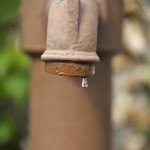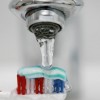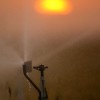Background
Each time you flush the toilet, you’re helping to create a valuable water resource – reclaimed water. Domestic or municipal wastewater is treated and then made available for reuse. Reclaimed water can then be used for parkland irrigation and even as an industrial coolant.
In the water services industry, the terms “reclaimed water”, “reused water”, and “recycled water” are all used interchangeably. Reclaimed water, however, is not graywater or the untreated, murky water that originates from bathtubs and washing machines.
There are two ways that reclaimed water can be harvested: direct or indirect reuse.
Direct reuse takes wastewater that has been treated at a reclamation plant and redistributes the water to various points via a network of pipes. Indirect water reuse directs treated effluent or wastewater from reclamation plants into water supply sources such as lakes, rivers, and aquifers. Reclaimed water injected back into the Trinity and Colorado Rivers can then meet the water demand of communities downstream.
In Texas, reclaimed water has increasingly gained attention as a significant water conservation strategy. The 2012 State Water Plan specifically lists reclaimed water as a key part of Texas’ water future.
Cities such as San Antonio, El Paso, Dallas, and Houston have all pursued considerable water reclamation projects. In Tarrant county, treated wastewater is injected back into artificial wetlands, an innovative form of indirect reuse that provides numerous habitats for native species while also securing a precious water resource.
This article was reported and researched by Sheyda Aboii, an intern with StateImpact Texas.




